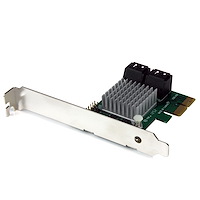arrowd
Dabbler
- Joined
- Jul 12, 2019
- Messages
- 16
First scary alert greeted me this morning: "Pool pool1 state is ONLINE: One or more devices has experienced an error resulting in data corruption. Applications may be affected."
It's an ASUS Z170-A with an SSD boot and 4 2TB WD Red Pro (each with < 14,000 hours) in one pool. Running v13.0 - I've not installed U1 yet. I think the pool scrub ran last night. The pool is showing as unhealthy. Storage - Disks - shows 2 checksum errors - the same as below and last SMART status is good for all four data disks.
I went to /var/db/system/syslog-.../log and did 'zpool status -v' which gave this:
I don't care about this older backup file from a Windows client and can happily delete it. Questions:
1. Is this error from one drive?
1.1 If so, which?
1.2 If not, what does the error mean?
2. Why wasn't ZFS able to repair it?
3. Will deleting the file make the pool healthy again?
3.1 If that won't do it, how to get pool to show healthy again?
4. Any other suggestions about what to do now?
It's an ASUS Z170-A with an SSD boot and 4 2TB WD Red Pro (each with < 14,000 hours) in one pool. Running v13.0 - I've not installed U1 yet. I think the pool scrub ran last night. The pool is showing as unhealthy. Storage - Disks - shows 2 checksum errors - the same as below and last SMART status is good for all four data disks.
I went to /var/db/system/syslog-.../log and did 'zpool status -v' which gave this:
Code:
pool: pool1
state: ONLINE
status: One or more devices has experienced an error resulting in data
corruption. Applications may be affected.
action: Restore the file in question if possible. Otherwise restore the
entire pool from backup.
see: https://openzfs.github.io/openzfs-docs/msg/ZFS-8000-8A
scan: scrub repaired 0B in 02:29:58 with 1 errors on Sun Jul 17 02:44:58 2022
config:
NAME STATE READ WRITE CKSUM
pool1 ONLINE 0 0 0
raidz1-0 ONLINE 0 0 0
gptid/39686f88-46bf-11eb-9bc5-305a3a5a2315 ONLINE 0 0 2
gptid/c6be12f6-46e4-11eb-80bd-305a3a5a2315 ONLINE 0 0 2
gptid/ce865e08-4714-11eb-a895-305a3a5a2315 ONLINE 0 0 2
gptid/38966df8-4776-11eb-840c-305a3a5a2315 ONLINE 0 0 2
errors: Permanent errors have been detected in the following files:
/mnt/pool1/Backups/Berman/Berman image backup/Berman image backup2022-06-04T123009.vbkI don't care about this older backup file from a Windows client and can happily delete it. Questions:
1. Is this error from one drive?
1.1 If so, which?
1.2 If not, what does the error mean?
2. Why wasn't ZFS able to repair it?
3. Will deleting the file make the pool healthy again?
3.1 If that won't do it, how to get pool to show healthy again?
4. Any other suggestions about what to do now?

